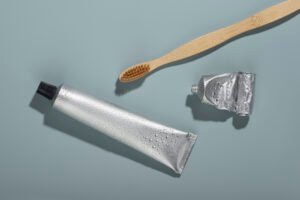Before diving into these important dental procedures, it helps to understand what dental pulp is. The pulp, the innermost part of the tooth, contains nerves, blood vessels, and connective tissue. It extends from the crown (the visible part of the tooth) down into the roots. When decay or injury reaches the dental pulp, it can inflame or infect it, leading to discomfort and potential damage to the tooth’s structure. Understanding dental pulp’s function is key to grasping the necessity of pulpotomy vs. pulpectomy.
Pulpotomy: Saving the Crown’s Pulp
A pulpotomy often receives the name “baby root canal.” This common dental procedure treats infection or decay limited to the dental pulp in the tooth’s crown portion.
- Procedure: During a pulpotomy, your dentist carefully removes only the diseased or infected dental pulp tissue from the tooth’s crown. After removal, they place an agent to help prevent bacterial growth and calm the remaining nerve tissue. This conservative dental approach aims to keep the healthy pulp within root canals intact, preserving the tooth’s vitality.
- When It’s Recommended: Dentists typically recommend pulpotomies when dental decay has not yet reached the root canals. The inflammation or infection must remain confined to the coronal dental pulp. It proves an effective dental therapy for primary (baby) teeth.
- Restoration: Following a pulpotomy, the dentist usually seals the tooth. A final dental restoration, commonly a stainless steel crown, protects the tooth from further damage and restores its full function.
Pulpectomy: Treating the Entire Pulp
A pulpectomy is a more extensive dental procedure performed when the entire dental pulp, including the tissue within the root canals, has disease or infection. This comprehensive dental treatment proves crucial for more severe cases of dental infection affecting a child’s tooth.
- Procedure: In a pulpectomy, the dental professional removes all of the diseased dental pulp tissue from both the crown and the root canals of the tooth. They then thoroughly cleanse and disinfect the canals. For primary (baby) teeth, dentists fill the canals with a resorbable material. This allows natural tooth exfoliation when the permanent tooth is ready to erupt, ensuring proper dental development. For permanent teeth, a non-resorbing material fills the root canal, a standard dental practice.
- When It’s Recommended: Pulpectomies become necessary when infection or inflammation spreads throughout the entire dental pulp, reaching the root canal system. This dental intervention prevents further complications and is a more extensive form of pulp therapy.
- Restoration: After the dentist fills the root canals, a final dental restoration seals and protects the tooth, completing the dental treatment.
Key Differences at a Glance: Pulpotomy vs. Pulpectomy
To further clarify the distinction between these two vital dental procedures, here are two tables summarizing their core aspects:
Procedural Differences in Pulpotomy vs. Pulpectomy
| Feature | Pulpotomy | Pulpectomy |
|---|---|---|
| Extent of Pulp Removal | Only the diseased dental pulp in the crown is removed. | The entire diseased dental pulp (crown and roots) is removed. |
| Location of Infection | Confined to the crown portion of the tooth. | Has spread throughout the dental pulp, including root canals. |
| Root Canal Involvement | Pulp within root canals remains undisturbed. | Root canals are thoroughly cleansed, disinfected, and filled. |
| Primary Goal | To preserve the vitality of the root pulp. | To completely remove all infected dental pulp and disinfect the entire canal system. |
Treatment & Outcome Overview for Pulpotomy vs. Pulpectomy
| Aspect | Pulpotomy | Pulpectomy |
|---|---|---|
| Commonly Known As | “Baby root canal” | More extensive root canal treatment |
| Filling Material (Primary) | Special agent placed only in the crown (no root canal filling). | Resorbable material used to fill root canals. |
| Typical Final Restoration | Stainless steel crown. | Stainless steel crown or other suitable final restoration. |
| Prognosis (Primary Teeth) | Good, aims to keep tooth until natural exfoliation. | Good, aims to keep tooth until natural exfoliation. |
Both pulpotomy and pulpectomy are crucial dental procedures in pediatric dentistry that aim to save a child’s natural tooth, prevent dental pain, and maintain proper oral health until permanent teeth erupt. Your pediatric dental care provider determines the most appropriate dental treatment based on the infection’s extent and the tooth’s health. When considering pulpotomy vs. pulpectomy, your dental team in Beverly Hills guides you to the best choice. For specialized care, trust the expertise of Beverly Hills dental professionals.
Q&A on Pulp Therapy
Here are common questions parents ask about pulpotomy vs. pulpectomy and pulp therapy in general for their child’s teeth:
Why Save Baby Teeth?
Saving baby teeth is important for several reasons. They help maintain space for permanent teeth, aiding in proper chewing and speech development. Furthermore, they prevent more severe dental infections that could affect overall health or emerging permanent teeth. This critical pulp therapy ensures optimal dental development.
No. Your dental team performs both dental procedures under local anesthesia, ensuring your child stays comfortable and feels no pain during the treatment. Many children also benefit from sedation options to help them relax during pulp therapy.
Duration varies depending on the tooth and the child’s cooperation. Generally, a pulpotomy might take 30-45 minutes. A pulpectomy, being more involved, could take 45-60 minutes or more. These are standard dental timelines for a child’s tooth.
Your child might experience some numbness for a few hours due to the local anesthesia. Over-the-counter pain relievers recommended by your dental professional can manage mild dental discomfort.
Both pulpotomy and pulpectomy have high success rates in saving primary teeth when performed correctly and followed by appropriate dental restoration. The goal is to keep the tooth functional until it’s naturally lost.
Recovery is generally similar for both, with minor discomfort in the first day or two. The most crucial part of recovery involves ensuring the final dental restoration (e.g., a stainless steel crown) stays in place and maintaining good oral hygiene.
Untreated dental pulp infections can lead to severe pain, swelling, and abscess formation. They can also spread infection to other parts of the body and potentially damage the developing permanent tooth underneath. In some cases, extraction might become necessary, affecting future dental health.
Yes. However, the procedures often receive the names “pulp capping” (for pulpotomy-like situations) or “root canal treatment” (for pulpectomy-like situations) in permanent teeth. Filling materials for permanent teeth differ (non-resorbable) because the goal is to keep these teeth for life, a long-term dental solution.
Signs can include persistent toothache, sensitivity to hot or cold, swelling around the tooth or gum, tenderness when chewing, or a visible pimple-like bump on the gums. However, sometimes there are no obvious symptoms until a comprehensive dental exam reveals the need for pulp therapy.
The primary alternative to pulp therapy for an infected tooth is extraction. However, extraction of a baby tooth can lead to space loss, affecting the eruption of permanent teeth, and might require a space maintainer. Your dental care provider discusses all viable dental options for your child’s specific situation. Seeking expert dental advice in Beverly Hills is always recommended.
Ensuring Your Child’s Brightest Smile with Expert Dental Care
Understanding the intricacies of pediatric dental procedures like pulpotomy and pulpectomy empowers you to make informed decisions for your child’s dental health. While these terms may seem complex, rest assured that advanced pediatric dentistry focuses on gentle, effective treatments designed to save your child’s natural teeth and prevent future dental complications.
Regular dental check-ups and prompt attention to any concerns are key to maintaining a lifetime of healthy smiles. If you have any questions about your child’s dental needs or suspect they might require pulp therapy, don’t hesitate to contact Little Smiles of Beverly Hills. Our dedicated team is here to provide compassionate and expert dental care for your little ones.
Sources:
- Pediatric Dentistry Procedures on BeverlyHillsDentist.com
- Pulp Therapy for Children on SmileAngels.com
- For more comprehensive guidelines on pediatric dental care, you can visit the American Academy of Pediatric Dentistry website.



